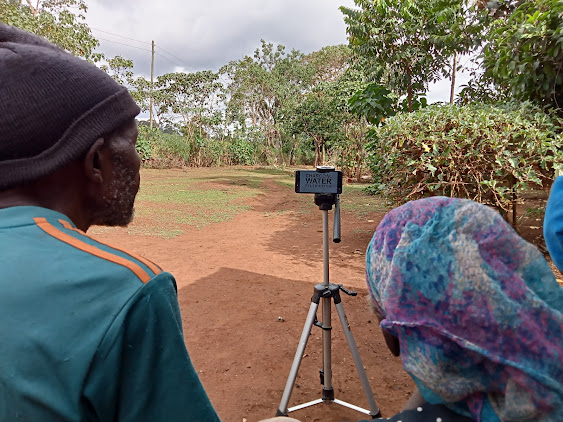Implementing Techniques from SAWBO Animations: Highlights From the Matawa Demonstration Farm in Kenya
By Gabriel Ingubu
Even before 1800,
Mumias town was known as Lureko. Lureko comes from a Luhya word Okhureka which
means to trap. The Wanga kingdom, where Mumias is situated, is historically
known to a center of trade where goods and services were exchanged with neighboring
communities and those living in the coastal regions of Kenya. The ruler of the
kingdom, King Mumia, enacted his headquarters in Lureko, where he ruled the
kingdom, carried out economic activities, and interacted with religious
leaders. Those who visited the headquarters indicated they stated, “I am going
to Mumia’s.” Hence the birth of the name.
Caught unaware, many farmers have been forced to utilize their farms for cereals, vegetables, and other food crops, but due to a lack of knowledge on good agricultural practices, they can`t meet the demands of the town.
Since the introduction Scientific Animation Without Borders (SAWBO) content into Lureko, what was just a thought is now turning into a reality, with more farmers taking notes from the videos and applying them to their farms. Based in the United States of America, and at Purdue University, SAWBO dispenses its videos on social platforms such as, television and WhatsApp, at workshops, community events, etc in local languages. Anyone can download and use SAWBO’s content “as is” – you can copy it, share it with others, and use it as you would like to learn from it or help others in your community. In order to accelerate sharing of the content, SAWBO has created partnerships with likeminded organizations and individuals to help disseminate the content wild and wide to the deepest villages where internet friendly equipment and platforms are considered a luxury
About five kilometers
from Mumias town, exists Matawa Demonstration Farm. Here, some of the
strategies found in the video animations are implemented. This is supported through efforts of Global
Youth Groove (GYG), a SAWBO collaborator.
Situated on nine acres of land, this farm has turned into a community
learning center for sustainable agriculture. “We collect all the waste from
animals and plants, turn it into manure, and then use it for crop production,’’
Said Paul Lutomia, farm supervisor.
The farm is expected
to harvest about eight tones of compost manure that they have prepared with the
use of biodegradable materials collected on the farm mixed with animal waste. “After
watching the SAWBO video on preparing compost survival
gardening, we realized that we have more than enough
materials on this farm already,” said Livingstone Okhasia, who also manages the
farm. Livingstone and Paul and other farm employees are determined in making
sure that the farm maximizes all the resources available to produce healthy
food.
The raised bed planting SAWBO video has
also been impactful. Vegetable production is like water to fish for Paul, who
has over 35 years of experience as a vegetable farmer. On the farm, he has
embraced a raised bed land preparation system where most African leafy
vegetables are grown besides exotic ones. “The raised bed system is the best
approach in preparing land for better yields, especially for vegetables.” He then
showed me the bed he had made, ready to plant.
The 10 plots of 2 X 9 meter beds combined, have the
capability of producing 100 kilograms of food per week[BP1] [B2] . “We raise the fine soil up to one
and a half feet high for water retention and separate a bed from each other by
a trench, which also serves as a walkway,” explains Paul. “You are not supposed
to step on the bed but can bend to half, then cross over the other side to
finish the other half. That is why we do two meters width.”
Survival Gardening: Raised Planting Beds


Pastor Camulus Amukoa inspecting
cowpea on raised beds. Photo by Gabriel Ingubu
Science
doesn't lie! The raised bed faming method is proving to be the right way of
doing vegetable farming. On the Matawa demo farm, Pastor Camulus Amukoa is
putting information from SAWBO videos into practice, and everything is doing
fantastic! In the picture above you can see that cowpea has formed canopies on
two beds. The vegetables are pure organic.







Comments
Post a Comment